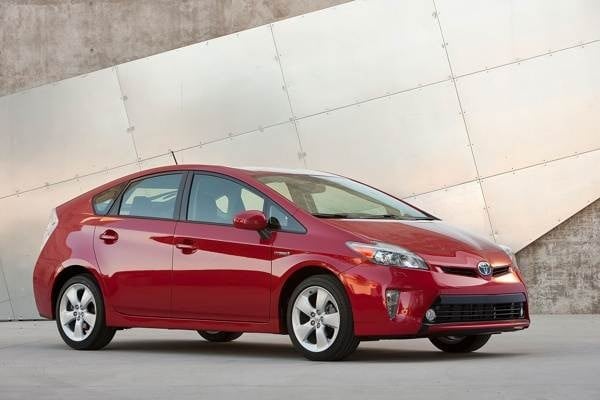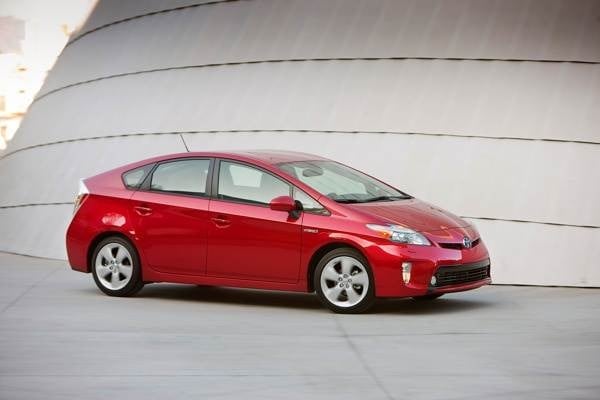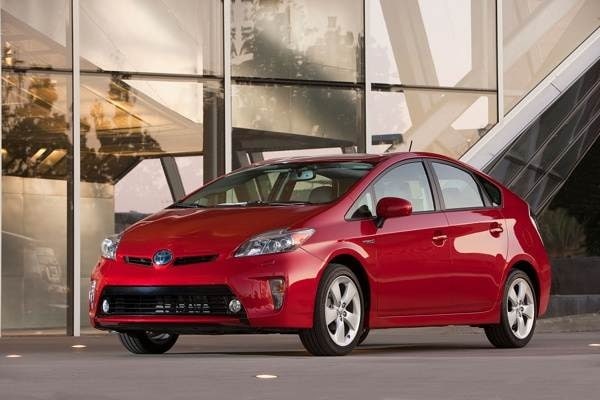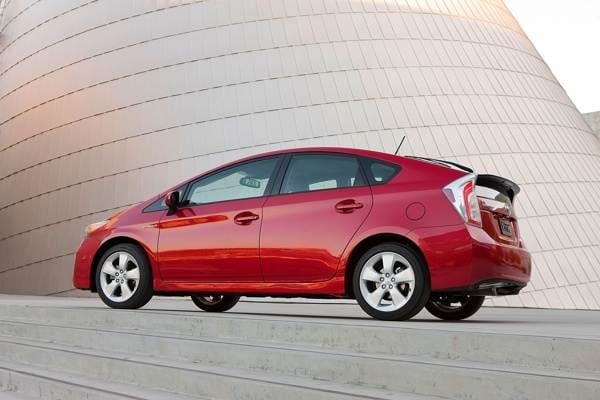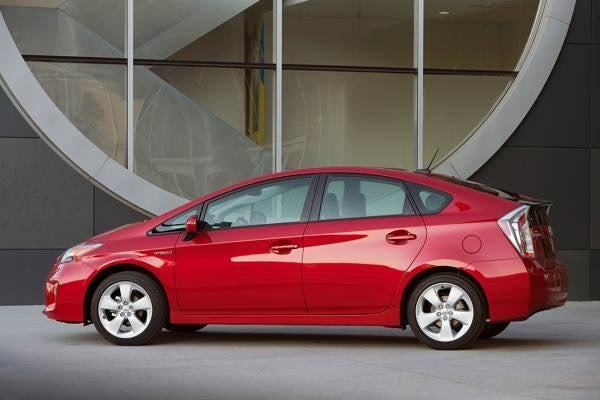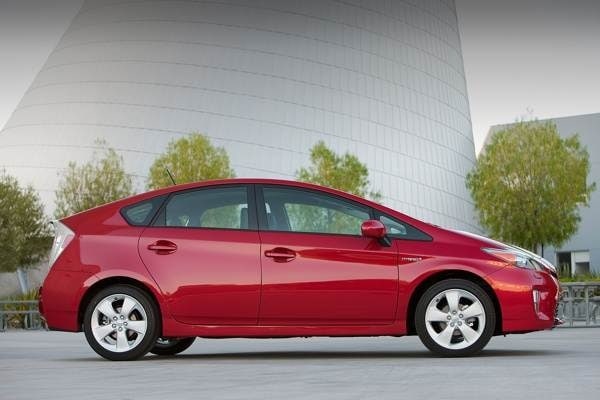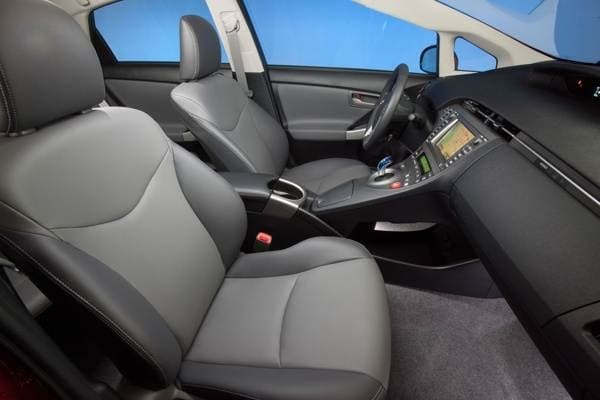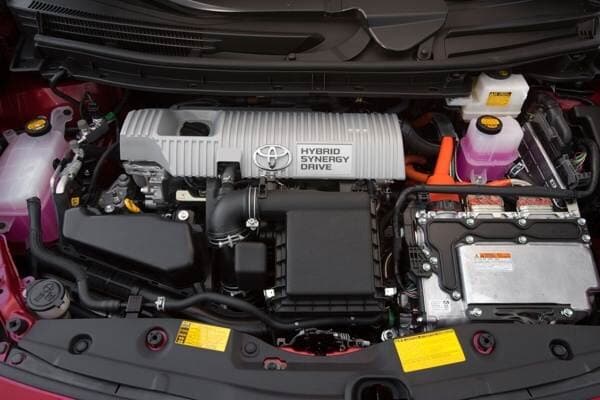Introduced in 1997 when a gallon of regular unleaded gasoline cost about a third of what it does today, Toyota‘s groundbreaking Prius opened the door for the hybrid revolution. Now in its third generation, the Prius dominates the hybrid segment in every worthwhile measure.
While the current model is both larger and more powerful than its predecessors, it also boasts significantly better overall gas mileage, with a 50-mpg combined EPA rating that puts it at the head of the midsize hybrid field. It all begins with the latest iteration of Toyota’s sophisticated super-efficient Hybrid Synergy Drive system – which, in short, captures braking and coasting energy, stores it in a battery and uses it to help power the car forward – but there are several other significant keys to its success as the country’s main mileage-maxer. Creating such a fuel-efficient vehicle that’s also comfortable and versatile enough to achieve mainstream success required a coordinated effort by the design and engineering teams that touched every aspect of the Prius package.
Aerodynamic optimization
In developing its exterior styling, Toyota designers subjected the latest generation Prius to more extensive wind tunnel testing than any other model in the corporate lineup. That rigorous discipline extended not only to the car’s unique sheetmetal contours, functional decklid spoiler and the specific shapes of its lighting/trim bits, but also to more subtle, often unseen elements like special underbody fairings that help channel airflow more efficiently around and beneath the car. Even the spoke configuration on its standard 15-inch alloy wheels plays a role in improving aero efficiency.
The end result is a stellar 0.25 coefficient of drag for the Prius, compared to the 0.30-0.35 Cd figures found on most of its like-sized conventional competitors. In addition to making it the most aerodynamic family car in the world, that wind-cheating advantage can translate into a meaningful gain in fuel economy at freeway speeds.
Focused weight reduction
Complementing its sleeker profile, the Prius further benefits from an extensive weight-reduction program that also extends into every corner of its design.
On a structural level, super high-tensile strength steel is used in key areas of the unit body while aluminum replaces conventional steel in the car’s hood, rear hatch, front stabilizer bar and even the brake calipers. In addition, many of the hardware components in the Prius, including the transaxle and power inverter, feature mass-minimizing configurations that further help shed mileage-impacting pounds.
The net result is a midsize 5-passenger vehicle that tips the scales at a mere 3,042 pounds. The Prius weighs nearly 600 pounds less than the 2013 Ford C-Max Hybrid and is even lighter than a number of smaller cars not burdened by heavy battery packs.
Reduced overall energy consumption
The final major piece of the econo puzzle that helps the Prius reach a 50-mpg combined EPA rating is an ability to curtail the amount of total energy required to send it travelling down the road under gasoline or electric power. Those gains are realized in several different ways.
For starters, enhanced designs help reduce internal friction and improve efficiency in a number of its powertrain components. Many of the ancillary systems in the Prius – including the climate control package, power-steering and water pump, along with the LED-intensive lighting – also are designed to minimize the mechanical and electrical power they need to function.
The regenerative braking system is optimized to maximize its ability to replenish the car’s battery pack on the fly, recapturing up to 30 percent of the energy that would normally be lost to further extend range and improve mileage. Finally, the Prius is fitted with bespoke low-rolling resistance tires that add an additional 2-3 percent to the overall system efficiency.
Adding up to 50
The 2013 Toyota Prius is rated by the EPA to return 51 mpg in the city and 48 on the highway, for an official combined rating of 50 mpg. And while it’s neither the roomiest nor the quickest midsize car money can buy, it’s in the ballpark on both fronts.
And that’s the real secret of its success.
